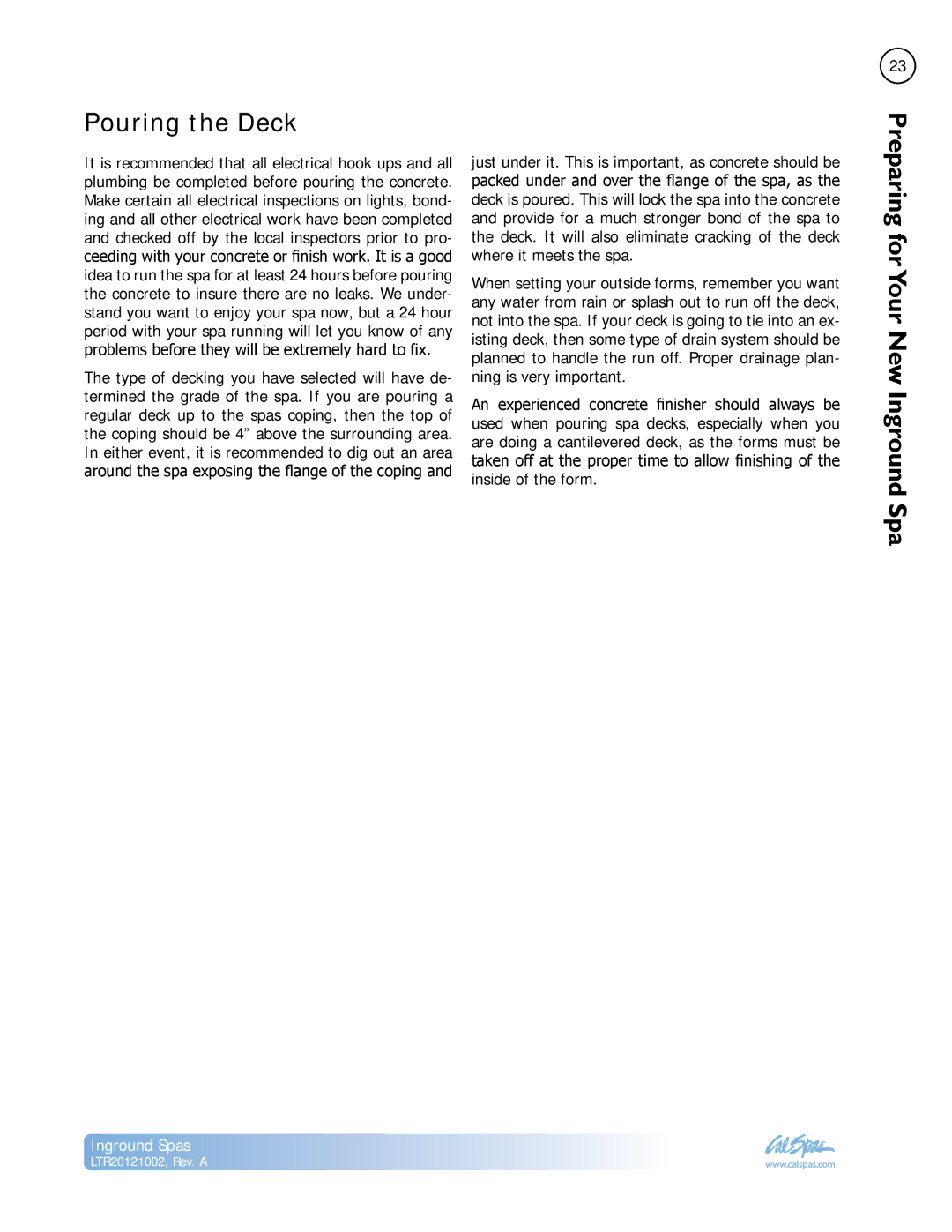
Pouring the Deck
It is recommended that all electrical hook ups and all plumbing be completed before pouring the concrete. Make certain all electrical inspections on lights, bond- ing and all other electrical work have been completed and checked off by the local inspectors prior to pro- ceeding with your concrete or finish work. It is a good idea to run the spa for at least 24 hours before pouring the concrete to insure there are no leaks. We under- stand you want to enjoy your spa now, but a 24 hour period with your spa running will let you know of any problems before they will be extremely hard to fix.
The type of decking you have selected will have de- termined the grade of the spa. If you are pouring a regular deck up to the spas coping, then the top of the coping should be 4” above the surrounding area. In either event, it is recommended to dig out an area around the spa exposing the flange of the coping and
Inground Spas
just under it. This is important, as concrete should be packed under and over the flange of the spa, as the deck is poured. This will lock the spa into the concrete and provide for a much stronger bond of the spa to the deck. It will also eliminate cracking of the deck where it meets the spa.
When setting your outside forms, remember you want any water from rain or splash out to run off the deck, not into the spa. If your deck is going to tie into an ex- isting deck, then some type of drain system should be planned to handle the run off. Proper drainage plan- ning is very important.
An experienced concrete finisher should always be used when pouring spa decks, especially when you are doing a cantilevered deck, as the forms must be taken off at the proper time to allow finishing of the inside of the form.
23 Preparingfor
Your New Inground Spa
LTR20121002, Rev. A | www.calspas.com |
